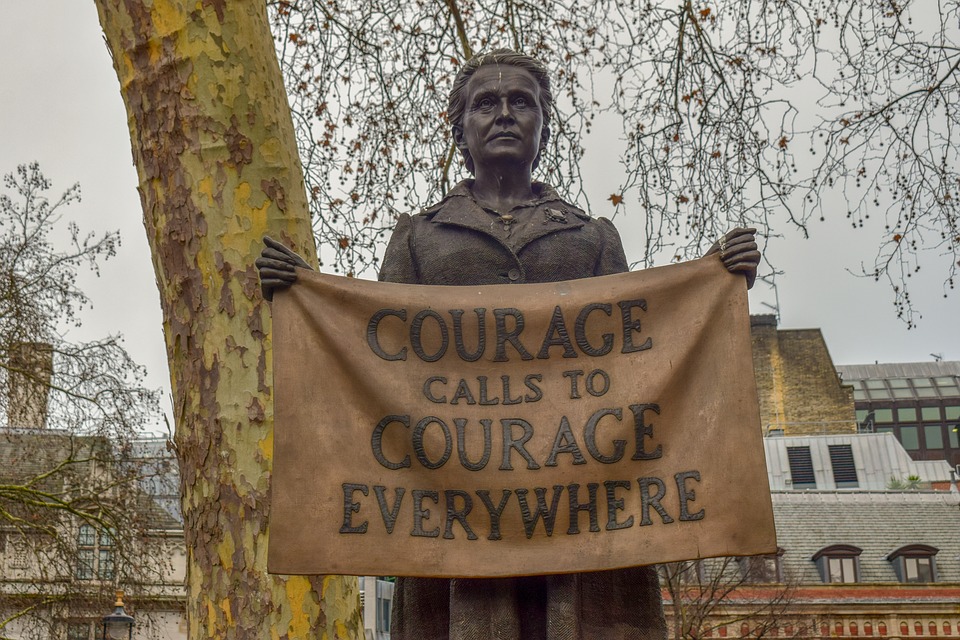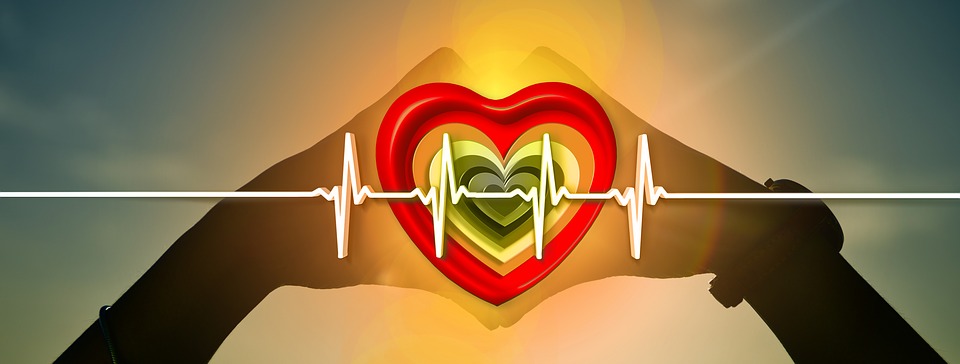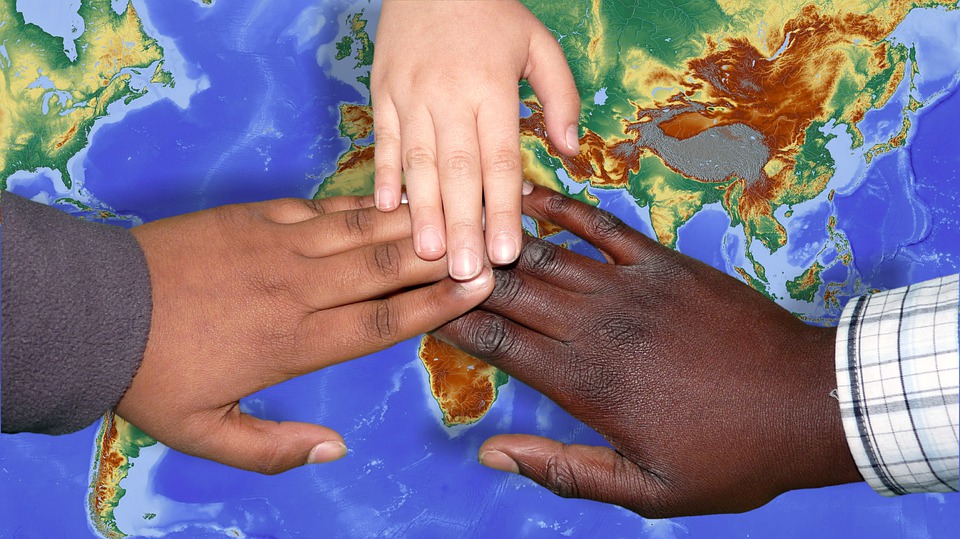I must uphold my ideals, for perhaps the time will come when I shall be able to carry them out. (Anne Frank)
Every night at 11:00, when MSNBC news anchor Brian Williams announces “This is Day Seven-billion-eight-hundred-gazillion-and-ninety-two of TheRUMP Administration,” I experience both the lung-crushing weight of enduring years of this Death Star travesty, and the heady elation a survivor feels that, yes, despite this horror show of horror shows, “I’m still here!” as Steve McQueen’s Papillon said.
Adaptation: The Dark Side
Adaptation, that Darwinian perennial, is generally held to be a good thing. Succinctly put, without it, we die. But it’s long been my contention that everything embodies its opposite. If there is light in the darkness, there is also the potential for darkness in light. With live-saving adaptation, the darkness is that we can also adapt to horrendous circumstances, passively accepting once-unthinkable situations as they play out repeatedly.

Like polar ice caps melting…and melting.
Like the deaths of people with diabetes who simply can’t afford their insulin as Big Pharma greedily jacks up the price again and again.
Like the mounting deaths, abuse, and trauma of immigrant children at the U.S. southern border, a violence that is entirely the result of intentional policies. Zero tolerance.
Staring at journalist Julia Le Duc’s haunting photo of El Salvadorans Óscar Alberto Martínez Ramírez and his 23-month-old daughter, Angie Valeria—their bodies washed up on the northern banks of the Rio Grande, the child tucked into her dad’s T-shirt for safety, her arm flung round his neck—one cannot escape asking: What kind of government/nation/world not only allows these atrocities, but actively encourages them? And what sort of people would tacitly accept this?
Feet in the Street: We Are the Resistance

The Women’s March in January 2017, following TheRUMP’s inauguration, made worldwide headlines. With participation in the U.S. estimated at 3.2 to 5.2 million people across 680 marches, it was the single largest protest ever in this country.
In that same month, tens, possibly hundreds of thousands gathered at airports around the U.S. to protest Executive Order 13769: the Muslim ban. I couldn’t get hard numbers, but this photo essay at theatlantic.com argues for the higher figure. An ocean of folks defending immigration, families, and democracy.

In April of that same year, with TheRUMP withdrawing from the Paris Climate Agreement and poised to gut all environmental protections, the People’s Climate March brought an estimated 200,000 protesters to Washington D.C. and many thousands more at some 300 sister marches around the country.
Ten months later, the high school kids—survivors of the Parkland shooting—crushed it, organizing numerous protests and walk-outs throughout the country, inspiring rally crowds, and speaking to the media with an eloquence and clarity most would have thought beyond their years. (Getting shot at can age you real quick.)
Recently, the Los Angeles Times ran a deeply moving story about Japanese internment camp survivors protesting TheRUMP administration’s plan to move 1,400 immigrant children to Fort Sill in Oklahoma. (Just in case your history teacher skipped this one: More than 100,000 Japanese Americans were put in prison camps for the duration of WWII, and Fort Sill was one such location.)

There to “protest the repetition of history,” as one camp survivor, 75-year-old Satsuki Ina, put it, the group refused the police order to move until they made their case to the crowd who’d gathered to hear them speak. Their message? “We need to be the allies for vulnerable communities today that Japanese Americans didn’t have in 1942.” [Photo: Ansel Adams, Library of Congress]
There is no doubt—‘we the people’ have been amazing. Up on our feet and into the street. The question is: Will we be able to sustain this level of in-your-face commitment to save the planet, the tattered shreds of our democracy, and the hopes we all hold for a peaceful life, a more humane world?
The Struggle Continues … and Continues

Already, there are signs we are flagging. The crowd that came to hear the Japanese internment camp survivors at Fort Sill totaled just 200. More troubling, the number of participants for the 185 Close the Camp rallies held across the nation on July 2, was in the tens of thousands, not the hundreds of thousands one might expect to protest the horrific camp conditions immigrants—many of them children—face at the border. More than one news source capped the number of New York City protesters at just 450. Four-hundred-fifty? For a city of more than eight million?
The Women’s March, too, has shrunk in size, dropping from millions in 2017 to roughly 700,000 in 2019, and a substantially reduced number of sister marches. This, despite the ever-increasing threats to everything the Women’s March stands for: human rights, women’s rights, LGBTQ rights, racial equality, immigration reform, healthcare, reproductive freedom, the environment, workers’ rights, freedom of/from religion.

In the article recounting this downward trend, The Washington Post asserts that “Public demonstrations remain a powerful medium for people who wish to be involved politically. A significant proportion of the country’s population continues to reject President Trump’s agenda — and to put feet to pavement to make that point visible.” But the Post also notes that “Seeing a smaller number of events over time is a typical pattern for social movements, which usually see protest-fatigue and attrition. A decline in the third year was predictable.”
Actually, we’ve seen this movie before. The shooting murders of 13 people at Columbine High School rocked the nation in 1999. Days of headlines, public outrage, and demands for stricter gun laws followed, and then trailed off … until 32 more people died in the mass shootings at Virginia Tech eight years later, and we started hollering about the need for gun control all over again. But in that interval, there had been over a dozen mass shootings, and there would be another nineteen before 20 little kids and six adults were gunned down in 2012 at Sandy Hook Elementary School.

And then 21-year-old white supremacist Dylann Roof would shoot up the Emanuel African Methodist Episcopal Church in Charleston, killing nine black church members (2015). Another 49 would die the following year in the Orlando Nightclub Massacre. And the year after that? That was the year of the Las Vegas Strip Massacre. Fifty-eight more lives. Gone.
There was a brief rowdy wake-up in 2018 when 17 kids were killed at Marjory Stoneman Douglas High School in Parkland, Florida. The survivors of that shooting spree rallied us, mobilized us with their anger and their hope. But overall, our response to mass shootings has gone from a roar to a whimper, a whispered thoughts and prayers. Most mass shootings don’t even make the news, perhaps because they’re not news anymore. But the literally brutal truth remains that since Sandy Hook—just seven short years ago—there have been at least 2,153 mass shootings, with at least 2,408 killed and 8,951 wounded. And Mitch McConnell is still refusing to take a Senate vote on the House bill requiring universal background checks for all gun sales.
The Challenge: All Eyes on the Prize

Why is it so hard to sustain action? Most Americans think immigration is a good thing for our country. A majority of us now believe climate change will harm our neighbors and our family. Most of us favor stricter gun laws. We don’t like what’s happening. We are horrified by families being separated at the southern border, by kids being told to drink out of toilets and forced to sleep on concrete floors or sleep standing because there’s no room to lie down.
Are we just plain exhausted? After all, it is Day Seven-billion-eight-hundred-gazillion-and-ninety-two of TheRUMP Administration, and each day seems to bring a slew of new threats: a possible war with Iran, the death of Roe v. Wade, the EPA’s green light for Monsanto’s neurotoxin chlorpyrifos that damages children’s brains and kills the bees who pollinate the plants that feed us. The blatant racist tweets and rally cries to “Send them back!” TheRUMP/Barr relay team’s refusal to recognize the House as a legitimate branch of government with the right to demand (and receive) information and issue subpoenas—a refusal, in fact, to recognize the rule of law our Constitution mandates.

Does repetition—atrocity upon atrocity—make for passivity and resignation? We may not like the beheading of journalists, the cruel destruction of families, the poisoning of our water and soil, but we live with a lot of things we’re not crazy about because they are part of the daily landscape and our lives are finite, our hours filled beyond bursting with work, family, school. Who among us, faced with the prospect of yet another protest/march/rally on a blustery winter evening or a sweltering summer weekend, is not momentarily lured by the desire to drop into the nearest recliner and binge-watch Stranger Things?
We are not a heartless nation. I think Michael Moore nailed it when he said we live in a liberal country—that the majority of Americans are very liberal. We don’t condone what’s happening. So how do we keep going, day after day, year after year to defeat the yellow-haired Gorgon and his cadre of silent but deadly billionaires? How do we save our democracy and crush the forces of darkness?
Help, I Can’t Save Everyone
For Paul Slovic, a psychologist at the University of Oregon, a crucial factor in overcoming inertia is to accept our human limits. Don’t get bummed out by the fact that you, as an individual, can’t do it all. Every action you take, every phone call you make matters. No effort is wasted, he stresses. “Even partial solutions can save whole lives.”

Slovic’s response grew out of decades of research pursuing the question: Why do we so often ignore mass atrocities? Why are people able to look the other way when the lives of 100 million+ Americans with pre-existing conditions will be at risk if the courts (with the president’s blessing) rule to kill the entire Affordable Care Act? How is it possible for so many people in a slew of countries to turn their back on the 65.3 million refugees and asylum seekers who will perish from violence or starvation without our help?
Slovic attributes this seeming indifference to something he calls “psychic numbing.” We are very willing to reach out and help someone in dire straits, but as the number of “someones” increases—even from one to two—we begin to experience an emotional distance. The 2015 death of the little Syrian boy, Aylan Kurdi, who drowned while he and his family were en route to Greece, seeking sanctuary, affected millions. Donations for immigrant relief spiked for a month or so, then plummeted as the issue faded from the death of a single child to the plight of survival for millions.

Large numbers overwhelm us. They give us what Slovic calls a false sense of inefficacy—the feeling that being able to solve only a part of the problem is no help at all. He cites an experiment that showed people were less likely to take action to save 4,500 refugees if they were in a camp of 250,000 than if the camp contained only 11,000 people. The larger total number of refugees made people feel like they had failed by not saving more lives—a higher percentage—even though the actual number saved is the same in both instances.
Slovic’s advice? When the numbers start to feel overwhelming, we need to rely less on our emotions and more on our reasoning. We also need to get the facts, something Americans, with our long history of relative isolation and insularity, aren’t always so keen on. For example, the fact that the vast majority of immigrants in the U.S. are in the country legally is a truth known by fewer than 50% of Americans. Ignorance of such facts puts us all in danger. The Bush Administration was able to pull off its invasion of Iraq, leading to a war the world is still suffering from, in part because 70% of Americans believed the administration’s lie that Saddam Hussein was personally responsible for the 9/11 attacks.
We Can’t Afford to Be Insular

In his article, Salon writer, David Masciotra stresses that American insularity also prevents many people from heeding the warning signs of history—how easily a democracy may be transformed into a dictatorship. “Fascism is not an overnight development,” he writes. “and when your country is …debating whether its treatment of immigrant and refugee children qualifies for the term ‘concentration camp,’ you have already taken a few large steps down that deadly road.”
His concern is echoed by the Never Again movement, an exciting group of progressive Jews who are organizing other young Jews to protest at immigrant detention centers around the country, most of them far from our southern border.

“Jews know what happens when ordinary people don’t intervene when they see the signs of mass atrocities,” says Alyssa Rubin, one of the movement’s organizers. “Ordinary people, on an everyday basis, are allowing ICE to operate in their cities. We’re trying to make it impossible to ignore that ICE is everywhere, all the time.”
During their first day of action (July 2), Never Again managed to shut down traffic during rush hour in Boston as 1,000 activists marched from the New England Holocaust Memorial to the Suffolk County House of Correction where ICE is detaining immigrants. Thirty-six protesters were arrested. Undaunted, the group has continued creating headlines like these:
Dozens Arrested as Over 1,000 Jewish Activists and Allies Shut Down Entrances to ICE Headquarters Demanding Closure of Trump Detention Camps (Source)
Meet the young Jews chanting ‘Never again!’ and blocking streets to shut down Trump’s camps (Source)

J. Aaron Regunberg, one the protesters arrested outside a detention facility in Rhode Island, stresses that Never Again is more than remembering how the Holocaust ended. “It’s also about how it started, with a gradual process of legal exclusion and state-sponsored dehumanization that led eventually to the deaths of my grandpa’s family and so many millions of others,” the former state rep and current Democratic candidate for lieutenant governor said. “It’s about understanding the path from beginning to end, and then throwing ourselves in the way of that path however we possibly can.”
Our Actions Do Have Consequences

Maybe we can’t save everyone at every moment, but our actions do have real and powerful consequences. Remember the thousands of ordinary Americans who flooded congressional Town Halls and Congress itself in 2017 to demand their health care—the ACA and Medicaid—be protected? They spoke up, they blocked halls, they made NOISE, and the GOP backed down. (Though, with the new Barr-approved GOP lawsuit to dismantle the ACA now working its way through the courts, we may have to start making NOISE again real soon.)
Public outrage—letters, petitions, phone calls—over the award of a Harvard research fellowship to former Michigan Governor Rick Snyder forced Snyder to decline the offer. A whole lotta people believed that Harvard could find someone better than a man now under criminal investigation for his responsibility in the Flint, Michigan water crisis—an ongoing disaster that has left thousands of children with lead-poisoning and a city without potable water on tap—and they spoke out.

I recently received this e-mail from UltraViolet:
Yesterday UltraViolet members were joined by MoveOn, Planned Parenthood-IL, Women’s March-IL, Women Employed, CREDO and a lot of soccer fans and equal pay advocates to deliver nearly 200,000 petition signatures (including yours!) to the U.S. Soccer Federation to demand equal pay for the women’s national team.
None of us in that 200,000 saved a life with this petition—or maybe we did, the roots of women’s oppression run deep and lives are lost as a result of gender inequalities. But it was the right thing to do. Everything is connected. We are all connected.
No Business As Usual

When four students were gunned down at Kent State in 1970 for the “crime” of protesting the Vietnam War, “No business as usual,” became a rallying cry across college campuses. In my view, they had their priorities straight. We cannot sit down and shut up when lives are at stake. After all, in the roll of the dice that is life, every Eric Garner, each Óscar Alberto Martínez Ramírez could have been us. And if we cannot find the strength to keep hollering, eventually it will be us. As author David Mitchell stated in his brilliant novel Cloud Atlas, one day “a purely predatory world shall consume itself.”

I opened this post with a quote from Anne Frank. I will close it with another: “In spite of everything I still believe that people are really good at heart. I simply can’t build up my hopes on a foundation consisting of confusion, misery, and death.”
We all need hope. So, take a deep breath. Believe you have the power to change things for the better, to make a difference, to save lives. Stand up, fight back. You are the Resistance.
See you on the barricades.

Interesting read as always and brilliantly written.
LikeLiked by 1 person
Thanks Phill. It’s tough times out there, but I’ve always subscribed to the Churchill line: If you’re going through hell, keep going! Take care. I loved your poem about becoming a parent. You nailed it.
LikeLiked by 1 person
This was a fantastic post. Great job on it.
It gives me so much hope to see people whose ancestors were previously put into internment camps (or otherwise persecuted) fight back against this cycle. Every act of resistance is important, but there’s something extra special about everyone banding together like that. 🙂
LikeLiked by 1 person
Yes! And just after I scheduled this post, I heard that several groups were banding together to protest Fort Sill’s use as a detention camp for 1,600 immigrant children. The number of protesters are up. A thousand-plus at the most recent rally. The latest word is that our hollering seems to be having an impact–at any rate, it has stopped business as usual for the moment. And there are many lives in every moment. Thanks for stopping by.
LikeLike
Hear, hear!
Here’s a disturbing fact about gun violence. Last year in Philadelphia there were 353 homicides, the most since 2007. This year so far there have been 189. Most of the killings were gun-related.
LikeLiked by 1 person
As your Philly stats show, America’s outrageous gun violence, which just goes on and on, and gets worse and worse is the perfect example of why we cannot just learn to “live with” something. Do we want to learn to live with a “Justice” Department that serves a (criminal) President exclusively? Or adapt to subsidizing for-profit detention camps that rip apart families and brutalize toddlers? What I didn’t get when I was 15 was that our fight for civil rights, our protests to end the Vietnam War, they were not the final struggle, just another chapter in the unending history of the tug-of-war between those with hearts and those without.
Thanks for stopping by, Neil.
LikeLiked by 1 person
Yes. Just yes. Your blog post should be required reading. Many people I know who used to follow the news closely now recoil from it in an attempt to avoid the gut-wrenching, mind-blowing, horror-inducing response to the latest atrocity. And then there’s guilt on top of a negative pyramid of feelings. Thank you, Amy, for effectively tackling a complicated issue and helping us find a better way forward. #WeAreAllInThisTogether
LikeLiked by 1 person
Thanks, Cindy. Your unflagging support is one of the ways I keep on keepin’ on. It is hard to face the relentless awfulness of what’s happening to our country, to our people and our planet. Two things spur me on in particular: 1) knowing that history PROVES how much worse things can get, and they don’t go away by not facing them; 2) it feels hopeful, it feels great to get out there and fight for healthcare and clean water and education and $15 an hour and fair elections shoulder to shoulder with other people. It feels like community. I was at one of my favorite bookstores–Everyone’s Books, in Brattleboro, VT–yesterday. I got a postcard there: “When injustice becomes the law, resistance becomes duty.”
LikeLike